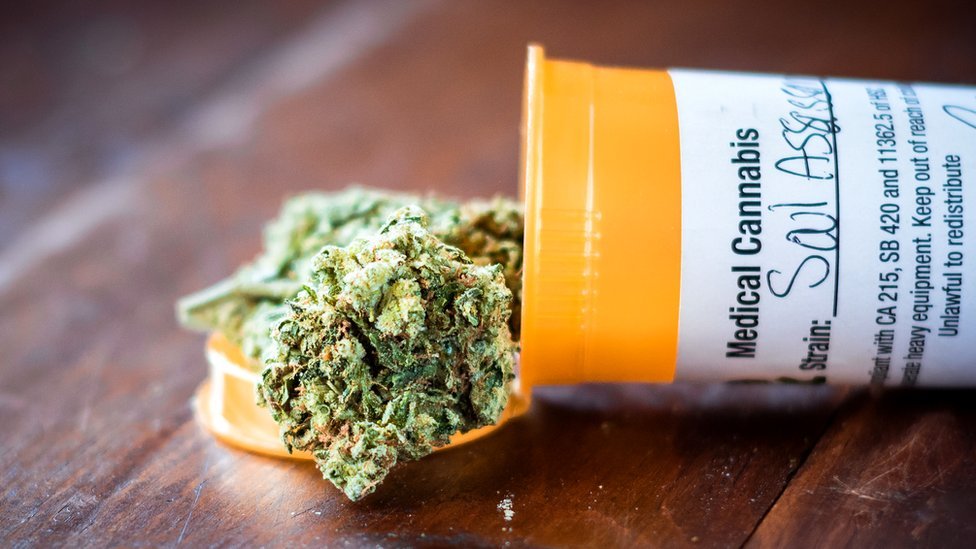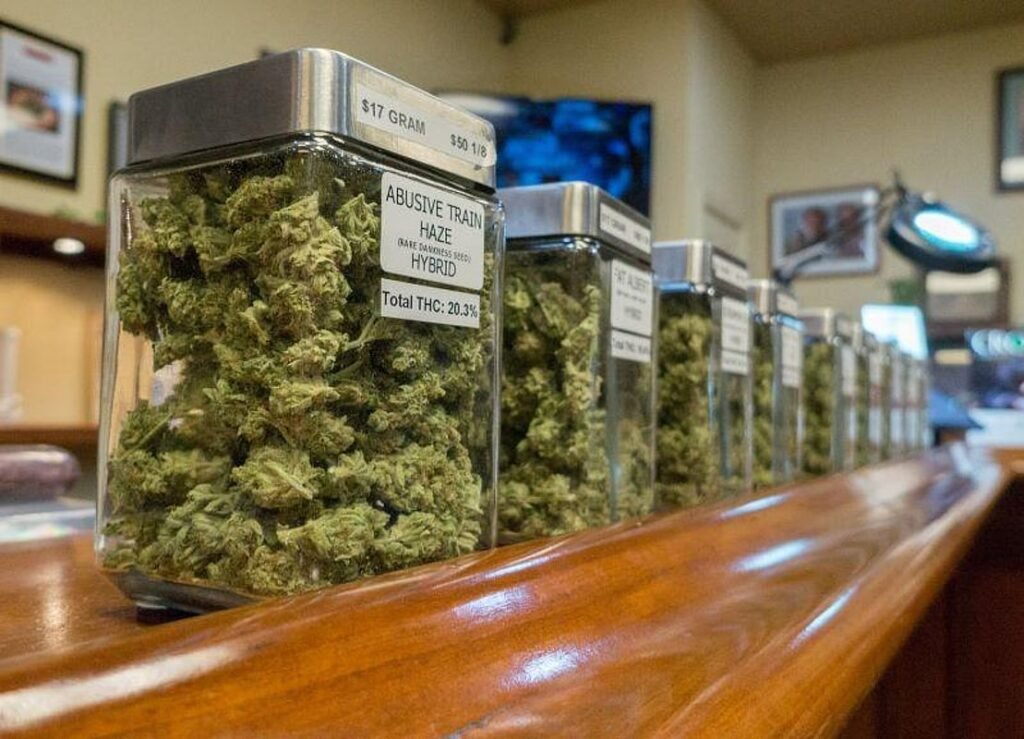
Medical Cannabis: A Solution To Chronic Pain In 2025 Leave a comment
Chronic pain is more than just discomfort—it’s a daily battle that can drain your energy, disrupt your sleep, and make even simple tasks feel overwhelming. While traditional painkillers help some, they often come with unwanted side effects. Could cannabis be a game-changer for pain management? Let’s explore!


Exploring Holistic Pain Management
Pain relief isn’t one-size-fits-all. Many people turn to alternative therapies to manage their discomfort. Some effective approaches include:
- Yoga & Meditation – Reduce stress and enhance the body’s resilience to pain.
- Acupuncture – A centuries-old practice that may help reduce inflammation and pain.
- Mindfulness-Based Stress Reduction (MBSR) – Helps patients stay present and cope better with pain.
- Cognitive Behavioral Therapy (CBT) – Teaches strategies to change negative thought patterns and improve pain tolerance.
Every person’s pain experience is unique, making it crucial to explore multiple treatment options for the best results.
Cannabis & Pain Relief: What You Need to Know
Cannabis is gaining serious attention for its potential to ease chronic pain, particularly for conditions such as:
- Arthritis & Joint Pain – Eases inflammation and improves mobility.
- Fibromyalgia – Helps manage widespread pain and enhances sleep quality.
- Neuropathic Pain – Can soothe nerve-related pain from multiple sclerosis or injuries.
- Migraines & Headaches – Some find relief from frequency and intensity.
- Back & Neck Pain – Helps with muscle relaxation and tension relief.
- Post-Surgery & Injury Recovery – Assists with pain management during healing.
- Cancer-Related Pain – Alleviates tumour pain and chemotherapy side effects.
Traditional Pain Treatments vs. Cannabis
Pain relief methods range from over-the-counter painkillers to physical therapy, acupuncture, and meditation. But conventional treatments don’t always work for everyone and may come with risks like addiction or long-term side effects.



Opioids vs. Cannabis:
- Opioids – Highly effective for severe pain but carry serious risks, including addiction and overdose.
- Cannabis – Offers promising pain relief with fewer severe side effects and significantly lower addiction potential.
Opioids have long been used for pain relief, but their risks are severe, including addiction, overdose, and dangerous side effects like respiratory depression. The opioid crisis has highlighted the devastating impact of dependency, with thousands of lives lost to overdoses each year. In contrast, cannabis presents a safer alternative for pain management. It offers effective relief for chronic and neuropathic pain without the life-threatening risks associated with opioids. Cannabis also has a significantly lower potential for addiction and does not cause fatal overdoses. Additionally, its anti-inflammatory properties can address the root cause of pain rather than just masking symptoms. For those seeking long-term pain relief with fewer health risks, cannabis stands out as a promising, natural solution.

THC vs. CBD: Which One Works Best for Pain?
When it comes to pain relief, THC and CBD offer unique benefits, making them valuable tools for managing discomfort. THC (Tetrahydrocannabinol) is the primary psychoactive compound in cannabis, directly interacting with the body’s endocannabinoid system to block pain signals, reduce inflammation, and create a sense of euphoria that can help distract from chronic pain. It is particularly effective for severe pain conditions like nerve damage, arthritis, and cancer-related pain. CBD (Cannabidiol), on the other hand, is non-psychoactive and works by reducing inflammation, calming nerve pain, and supporting the body’s natural pain-relief mechanisms without causing a high. This makes it a preferred option for those seeking pain relief without cognitive impairment. Many find that a balanced combination of THC and CBD offers the best results—CBD helps regulate THC’s psychoactive effects while enhancing its pain-relieving properties. Whether used individually or together, both cannabinoids offer a natural, safer alternative to opioids for those seeking effective and sustainable pain management.
Choosing the Right Cannabis Strain for Pain Relief
Not all cannabis strains are created equal! The right choice depends on your specific pain condition and tolerance. Here’s a breakdown:
CBD-Dominant Strains (Minimal High, Maximum Relief)
- God Bud (CBD ~14%) – Great for relaxation and muscle pain.
- CBD White Widow (CBD ~ 7 – 10%) – Known for its anti-inflammatory properties.
THC-Dominant Strains (Potent Pain Relief, Mild Euphoria)
- Gorilla Glue (THC ~22%) – A powerful, long-lasting painkiller.
- Northern Lights (THC ~ 19 – 24%) – Offers relaxation with a happy buzz.
- LA Confidential (THC ~20%) – A strong body-relaxing strain.
High-THC Strains (For Extreme Pain Management)
- Sour Diesel (THC ~25%) – Potent and long-lasting relief.
- Strawberry Banana (THC ~27-29%) – A deliciously strong strain.
- El Jefe (THC ~27%) – A heavy-hitting Indica for intense pain.
Balanced CBD:THC Strains (Best of Both Worlds)
- Mango Haze (THC ~6.3%, CBD ~9.5%) – Relaxing yet uplifting.
- Warlock CBD (THC ~10%, CBD ~10%) – A perfect balance of pain relief and mental clarity.
Looking Ahead: The Future of Cannabis in Pain Treatment
The growing acceptance and legalization of medical cannabis provide exciting opportunities for further research. With increasing studies and more informed doctors, cannabis is becoming an integral part of pain management discussions.
Could cannabis be the missing link in your pain relief journey? As research evolves, this natural alternative continues to offer hope for those seeking a gentler, effective way to manage chronic pain. 🌿
Potential Side Effects of Cannabis for Pain Relief
Like any medication, cannabis can have side effects. Although many people benefit, reactions vary from person to person.
Commonly reported side effects:
- Dry mouth
- Drowsiness
- Changes in appetite or mood
Less common but possible side effects:
- Dizziness
- Hallucinations
- Increased heart rate
Monitoring your body’s response is crucial. If you experience persistent or severe side effects, talk to your doctor about adjusting your dosage or exploring other options.
Research & Limitations in Cannabis Pain Therapy
While studies show promising results, much of the existing data is based on patient self-reporting. Challenges in cannabis research include:
- Lack of Standardization – Variations in cannabis strains make it hard to compare results across studies.
- Limited Randomized Controlled Trials – The gold standard of medical research is still scarce in this field.
- Funding Barriers – Alternative medicine often struggles to secure research funding.
As legalization expands, we can expect more comprehensive studies on cannabis’s effectiveness, safety, and long-term impact on pain management.

About the Author
Our deep love of plants and fascination with Cannabis has enabled over 25 years of successful small-scale Marijuana cultivation from indoor hydroponics, greenhouses, and outdoor growing set-ups.
As Cannabis laws around the world change, *we support the movement toward freedom of choice for responsible, consenting adults who wish to experience the joy and wonder of growing a Cannabis plant.






